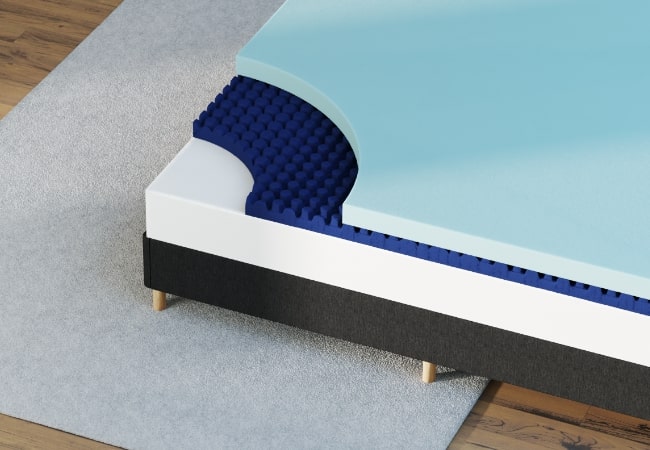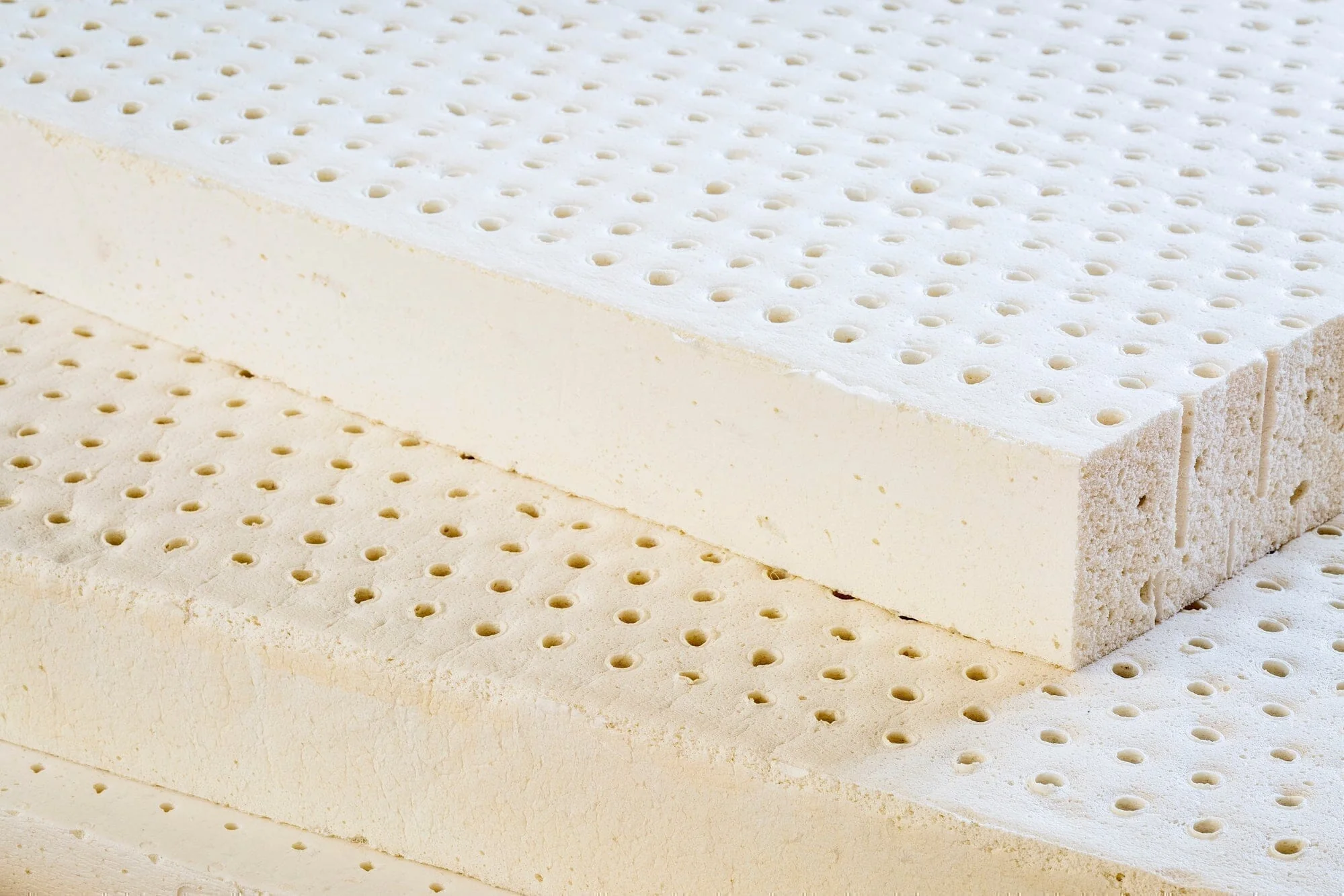Last Updated on June 3, 2024 by Annie Baldwin
Choosing the right mattress is not only about comfort but also its impact on the environment.
While traditional memory foam has been a popular choice for its comfort, it’s been under scrutiny for its environmental footprint.
This article will explain which memory foam is indeed the greener option.
Is Memory Foam Environmentally Friendly?

While traditional petroleum-based memory foam has some environmental drawbacks, eco-friendly memory foam made from natural materials like plant oils and bamboo aims to be more sustainable and renewable.
However, latex or hybrid mattresses can be even greener options.
Key Points
- Traditional memory foam uses petroleum and is not biodegradable.
- Eco-friendly memory foam uses more natural materials like plant oils and bamboo.
- Latex or hybrid mattresses can be even more eco-friendly than memory foam.
Our Opinion
While eco-friendly memory foam is an improvement over traditional options, we believe natural latex or a latex hybrid mattress is the most environmentally friendly choice for consumers looking for a green, sustainable mattress.
Memory foam, even eco-friendly versions, may still contain some harmful VOCs.
Is Memory Foam Biodegradable?

When it comes to mattress materials, many people are concerned about the environmental impact.
Traditional memory foam is made from petroleum-based chemicals, which are not biodegradable. However, eco-friendly memory foam options are becoming more available.
Eco-friendly memory foam is made from more natural materials like bamboo, wool, plant oils, and other renewable resources. These materials biodegrade much more easily than synthetic petrochemicals.
Some key points on the biodegradability of memory foam:
- Standard petroleum-based memory foam is not biodegradable.
- Eco-friendly memory foam made from plant-based oils, bamboo, and wool is biodegradable.
- Natural latex foam made from the sap of rubber trees is also biodegradable.
- Look for certifications like BioPreferred when choosing an eco-friendly biodegradable mattress.
The bottom line is that eco-friendly memory foam provides the pressure relief of traditional memory foam while being better for the environment. Choosing a biodegradable mattress material is an important way we can reduce waste and landfill accumulation.
How Is Memory Foam Manufactured?
The manufacturing process for memory foam is an important factor in its environmental impact. Here’s a quick look at how traditional and eco-friendly memory foams are made:
Standard memory foam starts with petroleum-based chemicals like polyols and diisocyanates. These are combined and reacted together, then formed into a foam using blowing agents. This creates the open-cell structure that gives memory foam its signature feel.
Eco-friendly memory foam skips the petrochemicals. Plant-based oils, natural latex sap, or other renewable materials are used instead. The oils go through a process called polyols conversion to create the polymers needed to make foam. From there, manufacturing is similar to standard memory foam.
Key differences in manufacturing:
- Standard memory foam relies on non-renewable petrochemicals.
- Eco-friendly versions use natural oils, latex, bamboo, wool, or other renewable materials.
- Eco foam production generates fewer harmful VOCs and emissions.
- Plant-based and natural latex foams are more sustainable and environmentally friendly.
Understanding how memory foam is made gives insight into its environmental pros and cons. Seeking out renewable, eco-friendly materials is an important step for reducing waste and pollution.
What Chemicals Are in Memory Foam?

Memory foam contains several synthetic chemicals that impact its environmental footprint. Here are some of the key ingredients:
Polyols – Petroleum-derived alcohols used to make the polyurethane polymers. Propylene glycol and propylene glycol are common.
MDI/TDI – Isocyanates like Methylene diphenyl diisocyanate or Toluene diisocyanate. These react with the polyols to form the foam structure.
Flame retardants – Added to meet flammability standards. Older foams used PBDEs, which are now banned due to toxicity.
Formaldehyde – Used in some adhesives and coatings. Classified as a human carcinogen.
Other additives include blowing agents, antimicrobials, and fragrances. VOCs are released during production and off-gassing.
Eco-friendly memory foam avoids these harsh ingredients. It uses natural latex, plant oils, and safer additives. While no foam is 100% chemical-free, greener options reduce toxins.
Checking certifications like CertiPUR-US and OEKO-TEX can help identify foams with safer chemistry.
Do Memory Foams Emit Vocs?
Yes, traditional memory foam mattresses emit significant levels of volatile organic compounds (VOCs). These are released from the petroleum-based chemicals used to make the polyurethane foam.
VOCs can cause eye, nose, and throat irritation, headaches, nausea, and other health issues. Long-term exposure may increase cancer risks.
Off-gassing is highest when a memory foam mattress is new. However, some VOC emissions can continue over months or years of use.
Look for foams made with natural materials like latex, wool, or plant oils to reduce VOCs. Certifications like Greenguard Gold or UL GREENGUARD can help identify mattresses with low emissions.
Letting your mattress air out before use, keeping it well-ventilated, and using natural bedding can also minimize exposure to VOC off-gassing.
While no mattress is VOC-free, choosing an eco-friendly foam with certifications can reduce indoor air pollution and health risks.
Eco-Friendly Memory Foam Alternatives
For a greener memory foam mattress, look for plant-based materials like soy, tea, or castor bean oils. These natural foams off-gas far less than synthetic petroleum-based foam.
Latex foam made from the sap of rubber trees is another excellent alternative. Natural latex has an open-cell structure that allows better airflow. It sleeps cool and resists mold, dust mites, and allergens.
Other eco-friendly options include mattresses made with wool, cotton, bamboo, coconut husks, or other sustainable materials. These renewable resources are biodegradable and less toxic than synthetic foam.
Certifications like GOLS (Global Organic Latex Standard) or GOTS (Global Organic Textile Standard) ensure materials are organic and ethically produced.
Look for mattresses with certifications like Greenguard Gold or UL GREENGUARD to verify low VOC emissions. OEKO-TEX certification means materials are free from harmful chemicals.
Choosing a mattress made with natural materials can reduce your carbon footprint while providing a healthier, non-toxic sleep environment.
FAQ
What Is Eco-Friendly Memory Foam?
Eco-friendly memory foam is made from more natural materials like plant oils, bamboo, soy, and tea extracts instead of petroleum. It aims to be more sustainable and biodegradable.
What Are the Disadvantages of Memory Foam?
Disadvantages of memory foam include heat retention, off-gassing of VOCs, and not being very eco-friendly or sustainable if made from petroleum.
Does Memory Foam Decompose?
Traditional memory foam does not easily decompose. Eco-friendly memory foam made from natural materials decomposes more readily.
Is Memory Foam Renewable?
Petroleum-based memory foam is not renewable. Some eco-friendly memory foams are made from renewable plant-based ingredients.
Conclusion
While traditional memory foam raises some environmental concerns due to being made from petroleum, eco-friendly memory foam aims to be more sustainable by using renewable, biodegradable materials. However, any memory foam may not be ideal for young children. Overall, eco-friendly memory foam tries to be more environmentally friendly, but other mattress options like latex may be greener.
